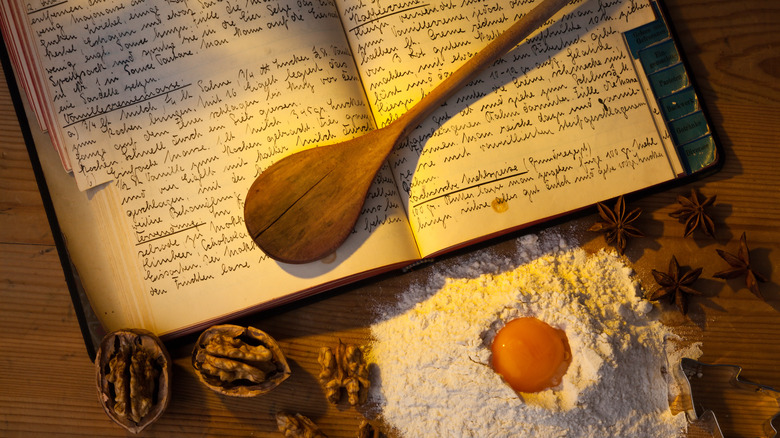This Is The First Time Vanilla Appeared In A Cookbook
Nothing says classic American summer like a vanilla ice cream cone. When the weather is hot and sticky, an appealing way to cool down is with a sweet, refreshing treat. Perhaps some ice cream lovers consider vanilla ice cream a bland choice when there are more creative offerings like peanut butter, cookie dough, or buttered pecan, but the flavor has a rich history that is anything but boring.
Vanilla, the spice that makes America's second most favorite ice cream flavor (surpassed only by chocolate) has an interesting past. Thomas Jefferson introduced Americans to vanilla ice cream in 1789; his copy of the recipe he discovered in Paris is now housed in the Library of Congress. The first time vanilla appeared in a cookbook in America was in the 17th century, but consumers didn't jump on the now-popular spice bandwagon right away. Here's the truth about vanilla's rise to prominence in the U.S.
America's sweet vanilla history
The first time vanilla appeared in a cookbook in America was in Mary Randolph's "The Virginian Housewife," published in 1824, which included a recipe for — you guessed it — vanilla ice cream. The first European mention of vanilla in a cookbook recipe came earlier, in 1805's "The Art of Cooking" by Hannah Glasse. The rise of vanilla in America didn't come until later in the 17th century — not because diners weren't looking to devour the sweet spice, but because demand was much greater than supply. Vanilla became more readily available and a more common ingredient after the Civil War, when vanilla bean farming techniques were expanded beyond Mexico to islands in the Indian Ocean. From that point on, vanilla was taking off.
Many cookbook recipes started calling for nonspecific flavoring, and for many cooks and bakers, vanilla was their first option. Additionally, the recipe for many sodas (including Coca-Cola, which hit shelves and soda parlors in 1886) called for a healthy dose of vanilla.
Unfortunately for vanilla lovers, it remains expensive — in fact, it's the second most expensive spice in the world. Thankfully, by the late 1880s, cookbook recipes were calling for vanilla so much that the beans were altered and sold in the form of vanilla extract, offering customers a more affordable option than whole vanilla beans.
Luckily for us, that means there's more vanilla ice cream to go around.

